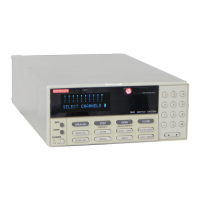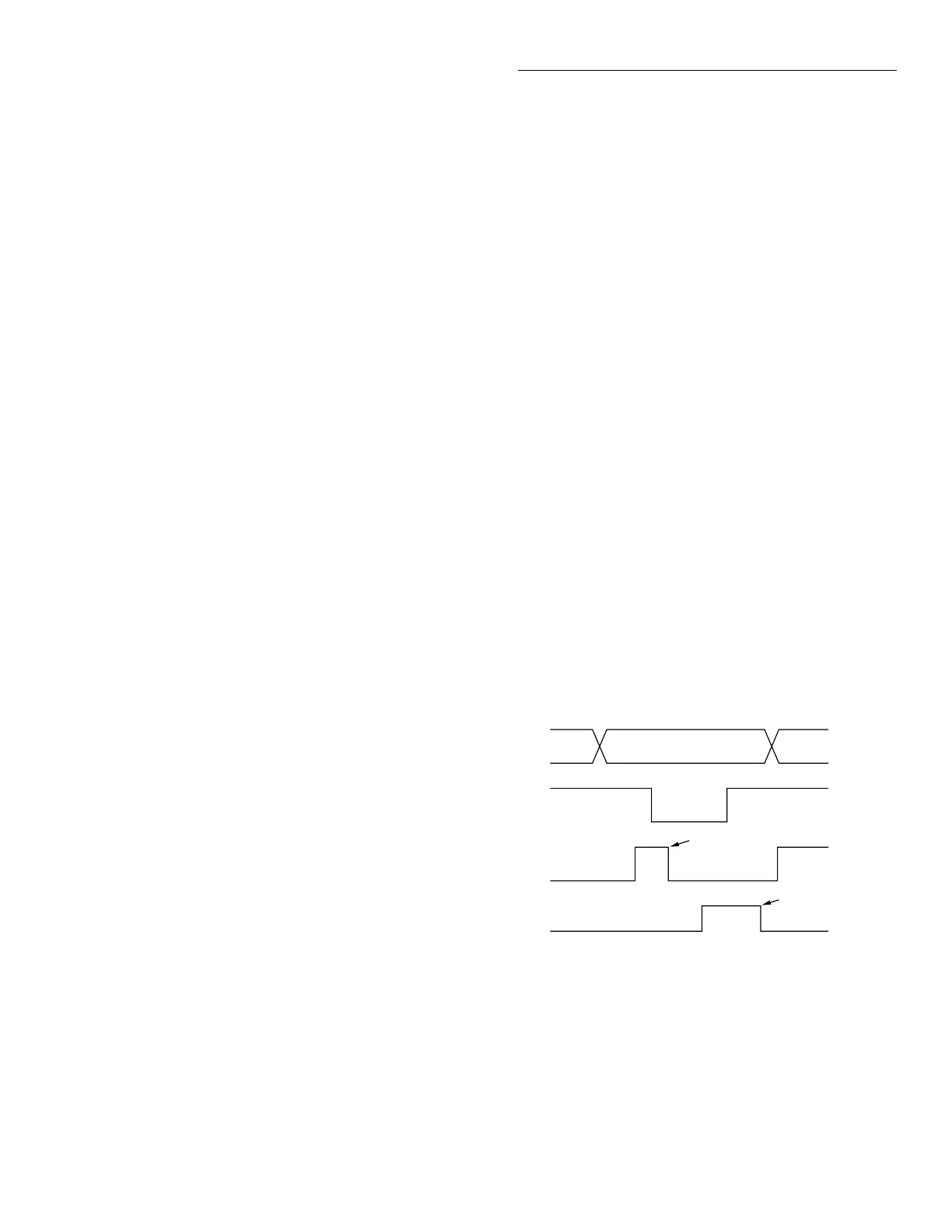IEEE-488 Bus Overview
D-3
Data lines
The IEEE-488 bus uses eight data lines that transfer
data one byte at a time. DIO1 (Data Input/Output)
through DIO8 (Data Input/Output) are the eight data
lines used to transmit both data and multiline com-
mands and are bidirectional. The data lines operate
with low true logic.
Bus management lines
The five bus management lines help to ensure proper
interface control and management. These lines are
used to send the uniline commands.
ATN (Attention) — The ATN line is one of the more im-
portant management lines in that the state of this line
determines how information on the data bus is to be in-
terpreted.
IFC (Interface Clear) — As the name implies, the IFC
line controls clearing of instruments from the bus.
REN (Remote Enable) —The REN line is used to place
the instrument on the bus in the remote mode.
EOI (End or Identify) — The EOI is usually used to
mark the end of a multi-byte data transfer sequence.
SRQ (Service Request) — This line is used by devices
when they require service from the controller.
Handshake lines
The bus handshake lines operate in an interlocked se-
quence. This method ensures reliable data transmis-
sion regardless of the transfer rate. Generally, data
transfer will occur at a rate determined by the slowest
active device on the bus.
One of the three handshake lines is controlled by the
source (the talker sending information), while the re-
maining two lines are controlled by accepting devices
(the listener or listeners receiving the information). The
three handshake lines are:
DAV (DATA VALID) — The source controls the state of
the DAV line to indicate to any listening devices
whether or not data bus information is valid.
NRFD (Not Ready For Data) — The acceptor controls
the state of NRFD. It is used to signal to the transmit-
ting device to hold off the byte transfer sequence until
the accepting device is ready.
NDAC (Not Data Accepted) — NDAC is also con-
trolled by the accepting device. The state of NDAC tells
the source whether or not the device has accepted the
data byte.
The complete handshake sequence for one data byte is
shown in Figure D-2. Once data is placed on the data
lines, the source checks to see that NRFD is high, indi-
cating that all active devices are ready. At the same
time, NDAC should be low from the previous byte
transfer. If these conditions are not met, the source
must wait until NDAC and NRFD have the correct sta-
tus. If the source is a controller, NRFD and NDAC must
be stable for at least 100nsec after ATN is set true. Be-
cause of the possibility of a bus hang up, many control-
lers have time-out routines that display messages in
case the transfer sequence stops for any reason.
Once all NDAC and NRFD are properly set, the source
sets DAV low, indicating to accepting devices that the
DATA
DAV
SOURCE
SOURCE
VALID
NRFD
NDAC
ACCEPTOR
ACCEPTOR
ALL READY
ALL ACCEPTED
Figure D-2
IEEE-488 handshake sequence
Artisan Scientific - Quality Instrumentation ... Guaranteed | (888) 88-SOURCE | www.artisan-scientific.com

